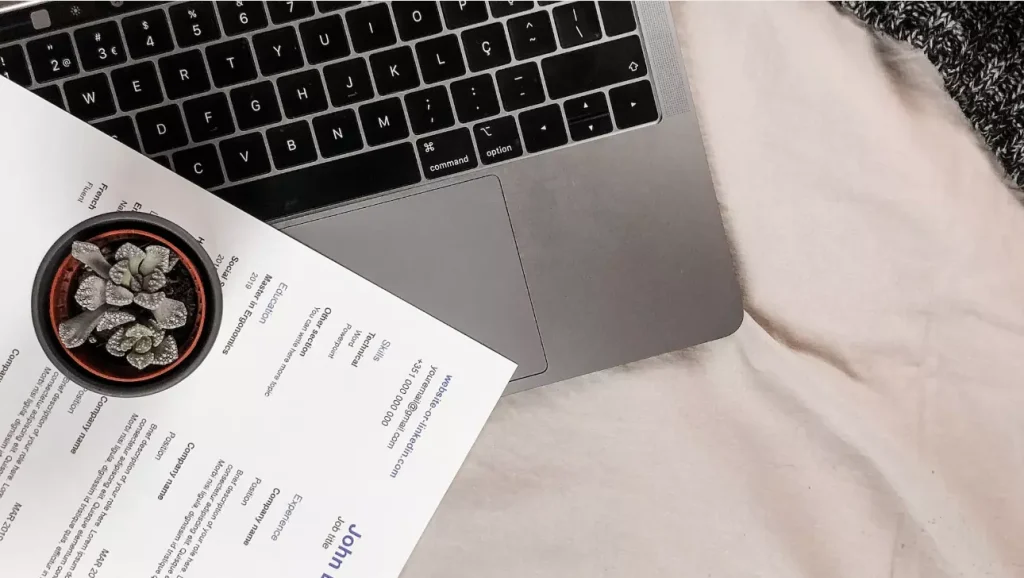Table of Contents
Introduction
How to write a resume? A well-written resume is a powerful tool that can open doors to new career opportunities. Whether you are a recent graduate, a seasoned professional, or someone looking to change careers, knowing how to write a compelling resume is essential. In this guide, we will provide you with a step-by-step process to create a resume that stands out from the competition and effectively showcases your skills, experiences, and qualifications.
Understand the Purpose of a Resume
How to write a resume? Before diving into the resume writing process, it is crucial to understand the purpose of a resume. A resume serves as a marketing document that presents a concise summary of your professional background, education, skills, and achievements. Its primary goal is to persuade potential employers to invite you for an interview. By highlighting your qualifications and demonstrating your fit for a specific role, a well-crafted resume can significantly increase your chances of landing your dream job.
Choose the Right Resume Format
Selecting the appropriate CV template is essential to present your information in a clear and organized manner. The three most common resume formats are chronological, functional, and combination. We will delve into each format, discussing their advantages and when to use them based on your specific circumstances.
Gather and Organize Your Information
Before you start writing your resume, gather all the necessary information about your professional background, education, certifications, skills, and achievements. We will guide you on identifying the most relevant information and organizing it effectively to create a compelling resume.
Craft an Attention-Grabbing Resume Summary or Objective Statement
The resume summary or objective statement is the first section that recruiters and hiring managers read. It should provide a concise overview of your skills, experiences, and career goals. We will provide examples and tips to help you create a compelling and impactful summary or objective statement that immediately captures the attention of the reader.
Highlight Your Professional Experience
The professional experience section is the core of your resume, where you showcase your work history, responsibilities, and achievements. We will guide you on how to effectively describe your experience, quantify your accomplishments, and tailor your bullet points to demonstrate your skills and contributions.
Showcase Your Education, Skills, and Certifications
In this section, you will learn how to present your educational background, including degrees, certifications, and relevant coursework. Additionally, we will discuss how to highlight your key skills, both technical and soft skills, to demonstrate your qualifications for the desired role.
Customize Your Resume for Each Application
How to write a resume? Customizing your resume for each job application is crucial to match the specific requirements and keywords mentioned in the job description. We will provide tips on tailoring your resume, including adjusting your summary or objective statement, emphasizing relevant experiences, and showcasing skills that align with the job requirements.
Polish Your Resume
How to write a resume? Proofreading your resume is essential to ensure it is error-free and presents a professional image. We will provide tips on reviewing your resume for grammar and spelling mistakes, checking for consistency in formatting, and seeking feedback from trusted individuals to ensure your resume is polished and ready to impress potential employers.
FAQs about “How to Write a Resume”
A resume is a concise document that provides an overview of your education, work experience, skills, achievements, and qualifications. It’s typically used when applying for jobs to showcase your suitability for a specific role.
Start by gathering information about your education, work history, skills, and accomplishments. This will serve as the foundation for your resume. Then, choose a suitable resume format and layout.
A resume typically includes sections such as “Contact Information,” “Summary or Objective,” “Work Experience,” “Education,” “Skills,” “Certifications,” and “Achievements.” The sections you include can vary based on your background and the job you’re applying for.
In most cases, including your full address and photo is not necessary. Include your name, phone number, email address, and LinkedIn profile (if applicable) for contact purposes.
Use a clean and professional format with consistent font styles and sizes. Use bullet points to list your accomplishments and responsibilities. Avoid using excessive colors or elaborate designs.
An objective or summary statement is optional, but it can be helpful to provide a brief overview of your career goals and what you bring to the table. Make it tailored to the specific job you’re applying for.
List your work experience in reverse chronological order (starting with the most recent job). Include the job title, company name, location, dates of employment, and bullet points describing your responsibilities and achievements.
Include your highest level of education, the name of the institution, degree earned, major or field of study, graduation date, and any relevant honors or awards.
Yes, include a section for skills relevant to the job. Divide your skills into categories such as “Technical Skills,” “Soft Skills,” or “Language Skills.” Be honest about your proficiency level.
Yes, it’s recommended to customize your resume for each job application. Highlight skills and experiences that directly align with the job description and the company’s needs.
In general, aim for a one-page resume if you’re early in your career or have less work experience. More experienced candidates might have a two-page resume, but prioritize conciseness and relevancy.
Yes, especially if they are relevant to the job or demonstrate skills that are valuable in the workplace, such as leadership, teamwork, or community engagement.
Yes, thoroughly proofread your resume to ensure it’s free of typos, grammatical errors, and formatting issues. A well-presented and error-free resume reflects positively on your attention to detail.
Conclusion
How to write a resume? Crafting a well-written resume is a critical step in your job search journey. By following the guidelines outlined in this comprehensive guide, you can create a compelling resume that effectively showcases your skills, experiences, and qualifications. Remember to tailor your resume for each application, highlight your achievements, and present a professional image. With a standout resume in hand, you are well-equipped to navigate the competitive job market and secure your dream job.
BuildFreeResume has a rating of on Sitejabber.




